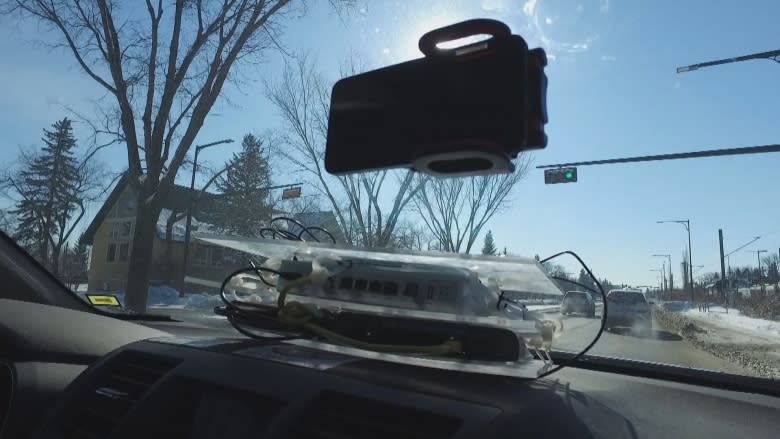Edmonton to host Canada's first smart network for vehicles
The University of Alberta and the City of Edmonton are lending new meaning to smart cars.
Researchers from the university's engineering department are working on a pilot technology called "connected vehicles," aimed at creating a safer, quicker and more efficient commute.
With the integrated system, vehicles will use wireless internet to share information, or "talk" with each other, through a central communications hub.
Lead researcher Tony Qiu, an associate professor of transportation engineering at the U of A, describes it as a "marriage" between the "smart vehicle and the smart infrastructure to improve our daily life."
Vehicles with the technology will be able to inform each other about road conditions, how long a green light will last or when pedestrians are about to cross the road.
Qiu explained that the Chinese government aims to have these smart cars make up 50 per cent of its new vehicles by 2020. Smart vehicles, as opposed to self-driving vehicles, can collect information from inside and outside the vehicle and process data in real time.
Aalyssa Atley, spokesperson for the university's Active Aurora project, said they've placed sensors along the roadside on the Anthony Henday, Whitemud Drive and 23rd Avenue.
These pick up on the activity around them and transmit the information to a central hub.
"There's a lot of interest right now in this kind of technology that makes the driver more aware of the environment around them," Atley said.
She said the the technology will improve safety and travel times by regulating traffic and allowing people to get to their destinations more quickly.
"A lot of car manufacturers are starting to put this technology in the vehicles."
Coun. Andrew Knack said the technology will enhance what he's expecting will be artificial intelligence installed at intersections around the city.
"I think it's critically important to being prepared as a city for the future of transportation," Knack said.
Knack has asked city staff to compile a report on how the signals are operating, how they're designed to adapt to a change in traffic patterns, and compare information with new traffic signal infrastructure.
He points to Pittsburgh as a prime example of where artificial intelligence is used to apply real-time information to what's happening on the road.
There, technology has reduced wait times by 40 per cent, travel times by 20 per cent and, in turn, emissions by about 20 per cent, Knack said.
"The goal is to ensure people and goods are moving as efficiently as possible in the city," Knack said.
Cell phones may be a stepping stone to making sure the technology is available to the most drivers.
The team has developed an app for people who don't have newer vehicles.
Industry players
"We're seeing how quickly companies are advancing self-driving vehicles, connected vehicle technology," Knack said.
General Motors, he said, aims to operate a fleet of self-driving vehicles by 2019.
Knack thinks it's important to get a head start on shaping policy and preparing to develop the city's 10-year transportation plan.
"The new ways that people are going to move will dramatically impact how we grow as a city."
The federal government has invested $1.3 million to the Active Aurora project, with other levels of government and private investors contributing $2.36 million.
Most recently, the Active Aurora project got a funding boost of $934,000 from Western Economic Diversification Canada to explore clean technologies that reduce greenhouse gas emissions.
The next phase of the project will be to recruit about 100 volunteers to drive around with the technology to test it on a larger scale.
@natashariebe





